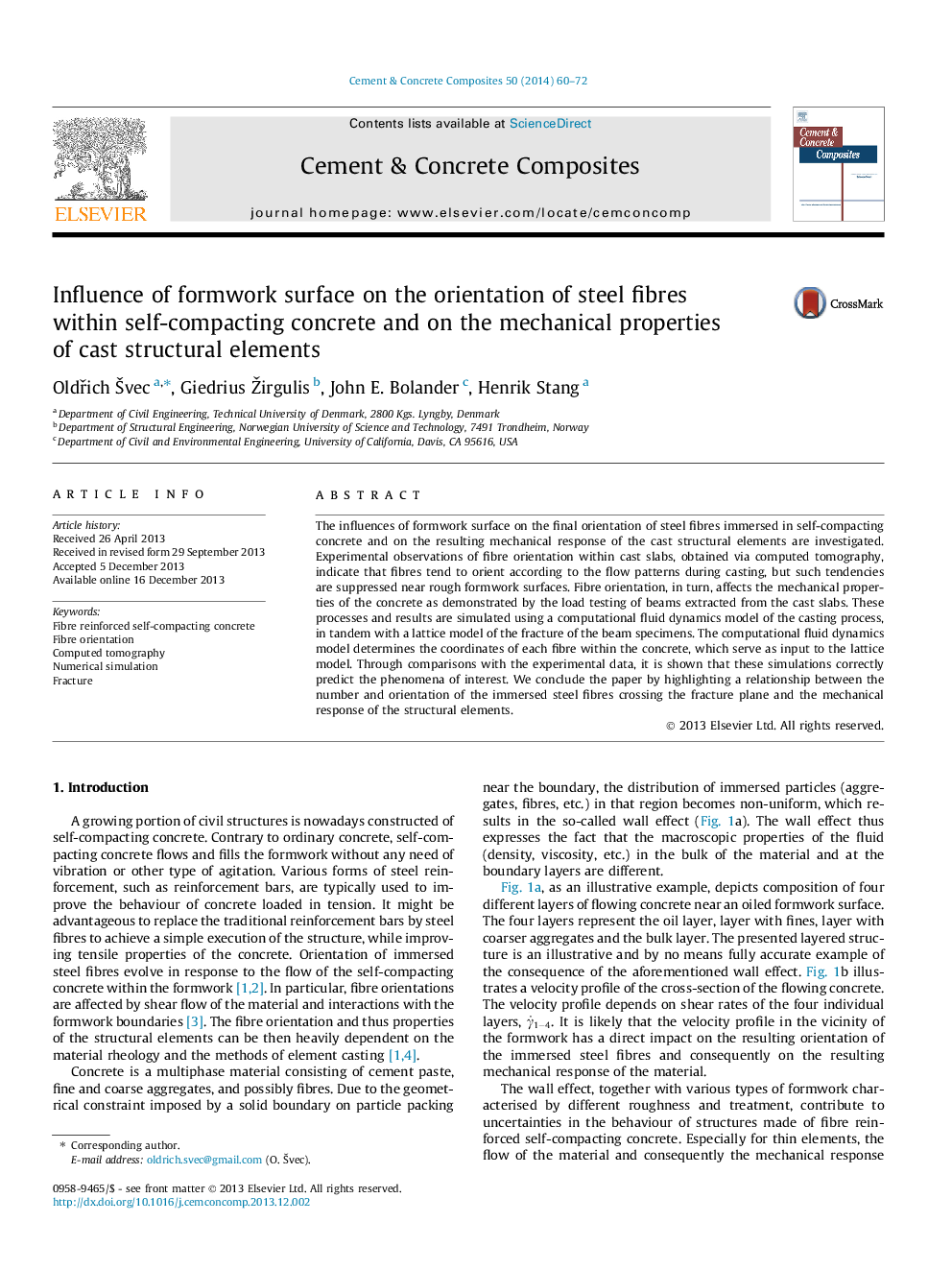| Article ID | Journal | Published Year | Pages | File Type |
|---|---|---|---|---|
| 1454661 | Cement and Concrete Composites | 2014 | 13 Pages |
The influences of formwork surface on the final orientation of steel fibres immersed in self-compacting concrete and on the resulting mechanical response of the cast structural elements are investigated. Experimental observations of fibre orientation within cast slabs, obtained via computed tomography, indicate that fibres tend to orient according to the flow patterns during casting, but such tendencies are suppressed near rough formwork surfaces. Fibre orientation, in turn, affects the mechanical properties of the concrete as demonstrated by the load testing of beams extracted from the cast slabs. These processes and results are simulated using a computational fluid dynamics model of the casting process, in tandem with a lattice model of the fracture of the beam specimens. The computational fluid dynamics model determines the coordinates of each fibre within the concrete, which serve as input to the lattice model. Through comparisons with the experimental data, it is shown that these simulations correctly predict the phenomena of interest. We conclude the paper by highlighting a relationship between the number and orientation of the immersed steel fibres crossing the fracture plane and the mechanical response of the structural elements.
